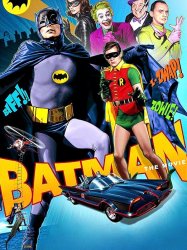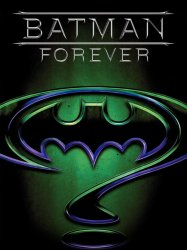Commissioner James Gordon

- Infos
- Photos
- Best films
If you like this character, let us know!
Real name Jim, Jimmy
Commissioner James "Jim" W. Gordon, Senior is a fictional character appearing in American comic books published by DC Comics, commonly in association with Batman. The character debuted in the first panel of Detective Comics #27 (May 1939), also Batman's first appearance. The character was created by Bill Finger, but credited to Bob Kane. Gordon's name was taken from the earlier pulp character Commissioner James W. "Wildcat" Gordon, also known as "The Whisperer", created in 1936 by Henry Ralston, John Nanovic, and Lawrence Donovan. Commissioner Gordon made his debut as an ally of Batman, making him the first Batman supporting character ever to be introduced.
In most incarnations of the Batman mythos, James Gordon is the Police Commissioner of Gotham City. He shares Batman's deep commitment to ridding the city of crime. In Golden and Silver Age Comics and on the 1960s Batman television show, he fully trusts, and is even somewhat dependent on Batman. In most modern stories, he is somewhat skeptical of Batman's vigilante methods, but nevertheless believes that Gotham needs him. The two have a mutual respect and tacit friendship. He has been married twice: to Barbara Kean Gordon, and then to Sarah Essen Gordon. Gordon is also the father of James Gordon, Jr. and the father or adoptive father (depending on the continuity) of Barbara Gordon, the first modern Batgirl and the information broker Oracle.
James Gordon is an important part of the Batman mythos and has appeared in most other media adaptations of the character. This has included video games, animation, and the live-action films. Gordon has been played by Lyle Talbot in the serial film Batman and Robin, Neil Hamilton in the television series Batman, Pat Hingle in the Tim Burton/Joel Schumacher film series, Gary Oldman in Christopher Nolan's The Dark Knight film series, and Ben McKenzie in the television series Gotham. In 2011, James Gordon placed 19th on IGN's Top 100 Comic Book Heroes. Beginning with Batman #41 in June 2015, Gordon himself became the new Batman following Wayne's apparent death in Batman #40.
Biography
Gordon had served in the United States Marine Corps prior to becoming a police officer. This gave him a set of skills that would serve useful in the future. In most versions of the Batman mythos, James Gordon is at one point or another depicted as Commissioner of the Gotham City Police Department. Gordon frequently contacts Batman for help in solving various crimes, particularly those committed by supervillains. Generally it is Gordon who uses the Batsignal to summon Batman, and it has become a running joke of sorts that the Dark Knight will often disappear in the middle of the discussion when Gordon's back is turned. Gordon is usually silver-haired, tall and thin with a mustache and glasses. In most incarnations, he is seen wearing a trenchcoat and a tie along with a suit. On occasion, he wears a fedora. He is also sometimes pictured with a cane, although it is not revealed why he uses it. Because DC Comics retconned its characters' history in the 1985 miniseries Crisis on Infinite Earths, and because of different interpretations in television and film, the details of Gordon's history vary from story to story.Early characterizations
In the original pre-Crisis version of his history, Gordon is a police detective who initially resents the mysterious vigilante's interference in police business. He first appears in Detective Comics #27, in the very first Batman story, in which they both investigate the murder of a chemical industrialist. Although Batman fights on the side of justice, his methods and phenomenal track record for stopping crimes and capturing criminals embarrasses the police by comparison. Eventually, Batman meets up with Gordon and persuades the detective that they need each other's help. Batman is deputized and works with Gordon as an agent of the law.
In Batman Special #1, it's revealed that Gordon, as a young cop, shot and killed two robbers in self-defense in front of their son. The results of this event would lead the boy to become the first Wrath, a cop killer with a costume and motif inspired by Batman, who would come after Gordon for revenge years later.
Post-Crisis
Batman: Year One
The post-Crisis version of the character was introduced in the 1987 storyline Batman: Year One, written by Frank Miller. In this version, James W. Gordon is transferred back to Gotham City after spending more than 15 years in Chicago. A man of integrity, Gordon finds that Batman is his only ally against the mob-controlled administration. One of the most significant differences in this version is that Batman is never deputized and Gordon's relationship with him is kept out of the public eye whenever possible. It is also added that he is a special forces veteran who is capable in hand-to-hand combat; he retaliates against an intimidation attempt by corrupt fellow officers with equal violence. He is depicted as having an extra-marital affair with a fellow detective, Sarah Essen. Essen and Gordon correctly deduce Batman's identity at one point, but never investigate their guess more fully in order to confirm it. Gordon breaks off their affair after being blackmailed by the corrupt Police Commissioner, Gillian B. Loeb. Mob boss Carmine Falcone sends his nephew, Johnny Viti, to abduct Gordon's family; Batman saves them, however, and helps Gordon expose Loeb's corruption. After Loeb resigns, Gordon is promoted to Captain.
The 1998 miniseries Gordon of Gotham takes place nearly 20 years prior to the current events of the DC Universe and two months before his arrival in Gotham in Batman: Year One. It reveals that Gordon, during his tenure in Chicago, struggled with his wife over conceiving a child while taking university night classes in criminology. He becomes a minor celebrity after a foiling a late-night robbery attempt. However, after deciding to investigate a corrupt fellow officer, he is assaulted and discredited. Gordon then uncovers evidence of rigging in the city council election and brings down two of his fellow officers, which leads to his commander recommending that he take a detective position opening in Gotham.
The story Wrath Child, published in Batman Confidential, issues 13-16 retcons that Gordon started his career in Gotham, but transferred to Chicago after shooting a corrupt cop and his wife (the parents of the original Wrath); the transfer was arranged by Loeb, then a captain, to prevent in an attempt to keep himself and other cops corrupt cops from being exposed and threatens Gordon with the future Wrath's life in order to force Gordon to comply with the transfer. Gordon transfers back to Gotham around the same time Batman starts his career.
While still a Lieutenant in the force, Gordon convinces Loeb's successor to implement the Bat-Signal as a means to contact Batman and also to frighten criminals. It is around this time that the first Robin, Dick Grayson, becomes Batman's sidekick. Gordon initially disapproves of a child joining in Batman's adventures, but soon grows to not only accept the boy but trust him as much as he does Batman.
In the following years, Gordon quickly rises to the rank of Commissioner after he and Batman weed out corruption within the department. After the death of his brother and sister-in-law, he adopts his niece, Barbara. Soon after he adopts Barbara, he divorces his wife, who returned to Chicago with their son James, while he retains custody of Barbara, who eventually becomes Batgirl. Gordon quickly deduces the heroine's true identity, and attempts to confront her about it, going so far as to search her bedroom for proof. However, he was semi-tricked out of this belief, when Batman (after sanctioning Batgirl officially) had Robin dress up as Batgirl while Barbara is on the roof with her father. Gordon would continue to believe his daughter is indeed Batgirl, but would not confront her about it again, until years later.
Batman: The Killing Joke
In the 1988 graphic novel The Killing Joke, the Joker kidnaps Gordon after shooting and paralyzing Barbara. He then cages Gordon in the freak show of an abandoned amusement park and forces him to look at enlarged photos of his wounded daughter in an effort to drive him insane, thus proving to Batman that even seemingly normal people can lose their minds after having "one bad day". Batman eventually apprehends the Joker and rescues Gordon. Despite the intense trauma he has endured, Gordon's sanity and ethical code are intact; he insists that Batman apprehend the Joker without harming him in order to "show him that our way works."
Marriage
Soon after Sarah Essen returns to Gordon's life, they rekindle their romance and get engaged. However, Essen cannot comprehend why Gordon needs Batman so much, which occasionally puts a strain on their relationship.
In Batman: Legends of the Dark Knight Annual #2, shortly before their planned wedding, former Lieutenant Flass (Gordon's former partner) beats Gordon and kidnaps James Jr. for ransom in exchange for letting a corrupt judge go free. Batman saves James Jr., while Gordon, Essen, Flass and the judge are trapped and must work together to escape.
For a brief period following the Knightfall and Prodigal storylines, Gordon is removed from his post as Commissioner and replaced by his own wife, due partly to his own disinclination to trust Batman after two substitutes — Jean-Paul Valley and Dick Grayson — assume the role and do not bother to tell him about the switch.
No Man's Land
The No Man's Land storyline takes place after Gotham is destroyed by an earthquake and isolated from outside assistance. Inside Gotham, Gordon struggles to maintain order in the midst of a crime wave. Batman is mysteriously absent for the initial three months, and Gordon feels betrayed. He forges an uneasy alliance with Two-Face, but the partnership doesn't last; Two-Face kidnaps Gordon, putting him on trial for breaking their "legally binding" alliance. Gordon escapes, however, and later meets with Batman once again. In this confrontation, Gordon berates Batman for letting Gotham "fall into ruin". Batman offers to prove his trust by revealing his secret identity, but Gordon refuses to look when Batman removes his mask. Eventually, the two repair their friendship.
At the end of the No Man's Land storyline, the Joker kills Sarah Essen-Gordon. An enraged Gordon barely restrains himself from killing Joker, shooting the Joker's knee instead. Not long afterward, Gordon is shot by a criminal seeking revenge for a previous arrest. Though seriously injured, he survives, and eventually makes a full recovery.
Retirement
Gordon retires from the police force after having served for more than 20 years. He remains in Gotham, and occasionally enjoys nighttime visits from Batman. Despite being retired, Gordon often finds himself drawn to a series of life-and-death circumstances, such as the Joker sending him flowers during Last Laugh, or being contacted by the temporarily reformed Harvey Dent to stop Batman from killing the Joker, to being kidnapped by Francis Sullivan, grandson of one of Gotham's notorious serial killers, during the Made of Wood storyline. After the attack by Sullivan, Batman gives Gordon an encrypted cellphone, the so-called Batphone, in case he needs to contact him, which also carries a transmitter in case of trouble. He also still has contacts with the country's law enforcement agencies, which the sheriff's departments request Gordon to contact Batman to help investigating a series of unusual murders on a suburb territory outside the city's limits; it turns out to be a paranormal case involving black magic, occult rituals, and the supernatural. Commissioner Michael Akins has taken his position, with many officers expressing reluctance to follow him. Even Harvey Bullock at one point attempts to humiliate Akins in front of other officers.
After Barbara requires surgery to counter the life-threatening effects of the Brainiac virus, Gordon visits her in Metropolis. She reveals to him her current role as Oracle, as well as her past as Batgirl. Gordon admits that he knew of her life as Batgirl, but is pleasantly surprised to know of her second career as Oracle.
Return
As part of DC's "One Year Later", Gordon has once again become Gotham's Police Commissioner. He rebuilds the Bat-Signal, but still carries the mobile Batphone that Batman gave him. The circumstances behind this are currently unknown, though there have been allusions to extreme corruption within the GCPD. These allusions are supported by events within Gotham Central, especially involving Detective Jim Corrigan. Gordon survives an attempt on his life by the Joker (Batman #655), who had drugged him with Joker Venom in an attack on the GCPD. He is taken to the hospital in time.
Blackest Night
During the Blackest Night crossover, while mourning the passing of the original Batman, who was apparently killed in action during Final Crisis, Gordon and his daughter witness Green Lantern crash into the Bat-Signal, after being assaulted by a reanimated version of the deceased Martian Manhunter. After offering the hero a spare car, the Gordons then find themselves fighting for their lives against the reanimated versions of the original Batman's rogues gallery at Gotham Central, where Gordon makes short work of serial killer Abattoir (in Black Lantern form) with a shotgun. They are rescued by the current Dark Knight, Robin, Red Robin, and Deadman, but are later attacked by Batman and Red Robin's parents, the reanimated Graysons and the Drakes. While Batman and Red Robin battle the Black Lanterns, Robin takes the Gordons to their underground base. It is later shown that Alfred Pennyworth tends his wounds (Gordon is unconscious, thus protecting the team's secret identities) along with Barbara's at the bunker's infirmary.
The New 52
In The New 52, Gordon is still the commissioner of the GCPD and a former Marine but is younger than his traditional portrayal; he still has the red hair and mustache from Batman: Year One. He is still married to his wife Barbara, and he and Barbara are the biological parents of Barbara "Babs" Gordon (aka Batgirl).
During the Forever Evil storyline, Commissioner Gordon enters Blackgate Penitentiary in order to save the warden. When a turf war erupts between the Arkham inmates, Gordon helps to evacuate the citizens from Gotham City.
Following Bruce Wayne's apparent death in battle with the Joker during the events of Batman #40, Gordon will take up the mantle of Batman using a mecha style suit to fight crime in Gotham City. Gordon first appears as Batman in Divergence #1, DC Comics 2015 Free Comic Book Day issue, in which he is shown to be sponsored by the mega-corp Powers International. He also notes that this is "the worst idea in the history of Gotham," as he suits up, but agreed to the offer when various sources argued that there was nobody else capable of understanding Gotham the way Batman had done over the years, Gordon contemplating the merits of a Batman who works with the system rather than outside it. However, he begins to recognize the issues of this approach when he discovers that some of his past arrests have been murdered while out on parole and he is forbidden from investigating the crime himself. Gordon later meets the currently-depowered Superman when Clark comes to Gotham to investigate evidence that the weapons currently being used against him were created in Gotham, but their initial meeting results in a fight as Superman doesn't believe that Gordon is the new Batman and Gordon doubts Superman due to him currently working with Luthor.
Best films
Played by the actors
Filmography of Commissioner James Gordon (33 films)

Batman (1989)
, 2h6Directed by Tim Burton
Origin USA
Genres Science fiction, Thriller, Fantasy, Action, Crime
Themes Films about children, Batman films, Superhero films, Super-héros inspiré de comics
Actors Jack Nicholson, Michael Keaton, Kim Basinger, Robert Wuhl, Pat Hingle, Billy Dee Williams
Rating74%





The mayor of Gotham City orders District Attorney Harvey Dent (Billy Dee Williams) and Police Commissioner James Gordon (Pat Hingle) to increase police activity and combat crime in preparation for the city's bicentennial. Reporter Alexander Knox (Robert Wuhl) and photojournalist Vicki Vale (Kim Basinger) begin to investigate reports of a vigilante dubbed "Batman", who is targeting the city's criminals.

Batman (1966)
, 1h45Directed by Leslie H. Martinson
Origin USA
Genres Science fiction, Fantastic, Comedy, Fantasy, Action, Adventure, Crime
Themes Films about children, Batman films, Superhero films, Super-héros inspiré de comics, Children's films
Actors Adam West, Milton Frome, Madge Blake, Burt Ward, Lee Meriwether, Cesar Romero
Rating64%





When Batman (West) and Robin (Ward) get a tip that Commodore Schmidlapp (Reginald Denny) is in danger aboard his yacht, they launch a rescue mission using the batcopter. As Batman descends on the bat-ladder to land on the yacht it suddenly vanishes beneath him. He rises out of the sea with a shark attacking his leg. After Batman dislodges it with bat-shark repellant, the shark explodes. Batman and Robin head back to Commissioner Gordon's office, where they deduce that the tip was a set-up by the United Underworld, a gathering of four of the most powerful villains in Gotham City (Joker, Penguin, Riddler and Catwoman).

Batman and Robin (1949)
, 4h23Directed by Spencer Gordon Bennet
Origin USA
Genres Science fiction, Thriller, Fantastic, Action, Adventure, Crime
Themes Films about children, Batman films, Superhero films, Super-héros inspiré de comics
Actors Robert Lowery, Johnny Duncan, Poni Adams, Lyle Talbot, Ralph Graves, Don C. Harvey
Rating58%





The Dynamic Duo face off against the Wizard, a hooded villain with an electrical device which controls cars and a desire to set challenges for the Dynamic Duo, whose identity remains a mystery throughout until the end.
 Connection
Connection








